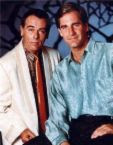Words are powerful things, aren't they? The Reader's Digest tells me 'It Pays To Increase Your Word Power' and that's indeed true. For it's only while I've been analysing the word 'bitterness' that I have been led today to include a similar word 'contempt', which has taken me down a whole new line of contemplation. Wikipedia has the following interesting take on this:
Professor Robert C. Solomon places contempt on the same line continuum as resentment and anger. According to him the differences between the three emotions are that:
Professor Robert C. Solomon places contempt on the same line continuum as resentment and anger. According to him the differences between the three emotions are that:
- Resentment is directed toward a higher status individual
- Anger is directed toward an equal status individual
- Contempt is directed toward a lower status individual
Having spent a while identifying and dealing with Bitterness and Resentment in my own life, I now need to consider and deal with Contempt - and I suppose Anger as well, for completeness.
You, therefore, have no excuse, you who pass judgment on someone else, for at whatever point you judge the other, you are condemning yourself, because you who pass judgment do the same things. Now we know that God's judgment against those who do such things is based on truth. So when you, a mere man, pass judgment on them and yet do the same things, do you think you will escape God's judgment? - Romans 2:1-3, NIV



























